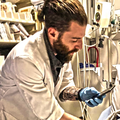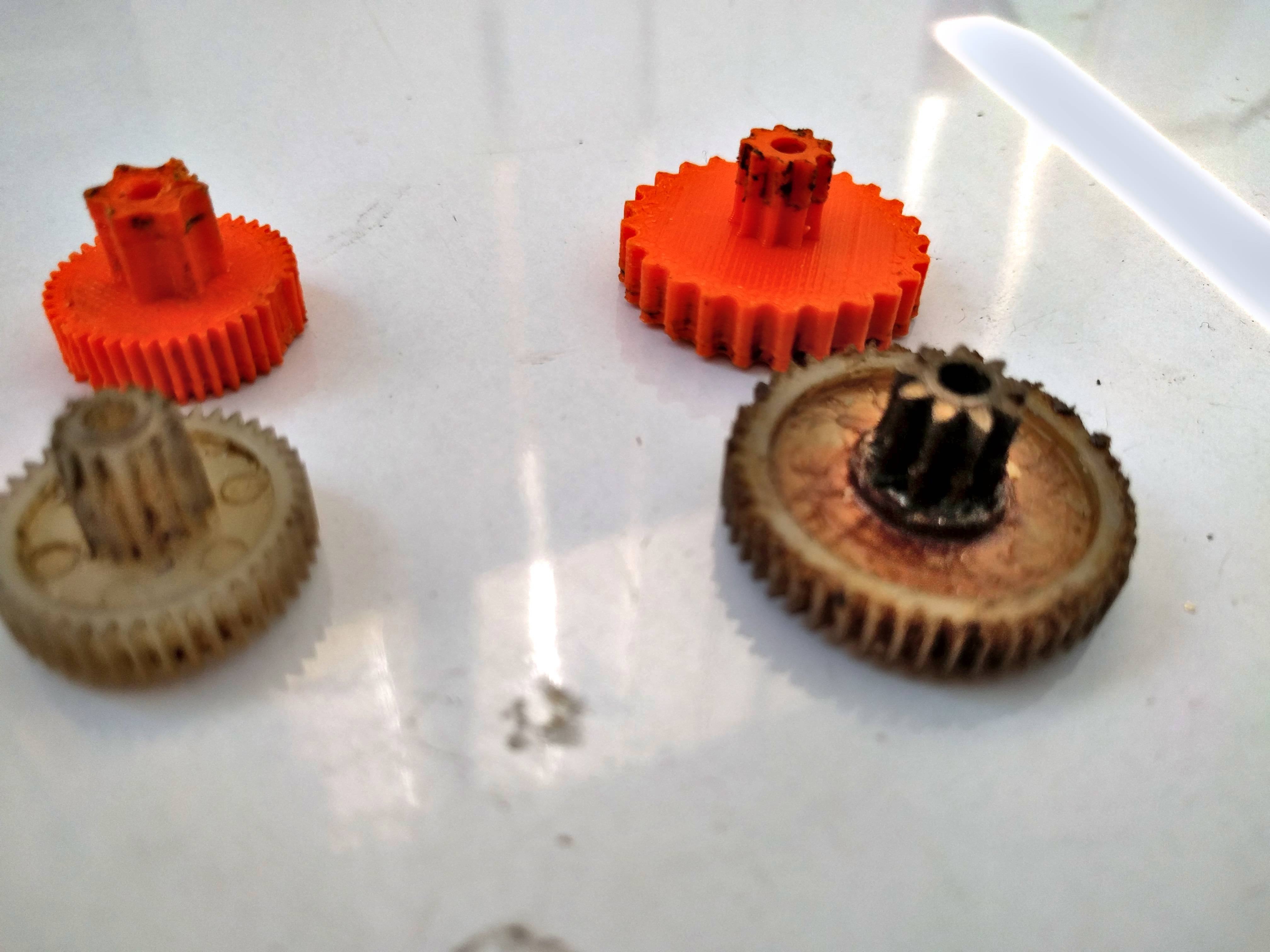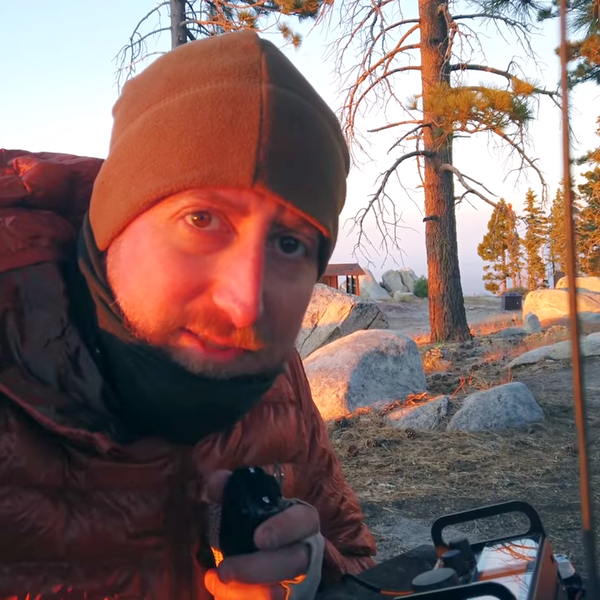 It took me almost a year just to ship in dummies for training. And we had to claim they were non-medical tools for displaying clothes or some oddity
It took me almost a year just to ship in dummies for training. And we had to claim they were non-medical tools for displaying clothes or some oddity
 @Tammo Heeren : This was already happening. BUT, we got derailed by having to make tourniquets over the past two years.
@Tammo Heeren : This was already happening. BUT, we got derailed by having to make tourniquets over the past two years.

https://hackaday.com/2018/06/28/3d-printed-tourniquets-are-not-a-cinch/
3D Printed Tourniquets Are Not A Cinch
Saying that something is a cinch is a way of saying that it is easy. Modeling a thin handle with a hole through the middle seems like it would be a simple task accomplishable in a single afternoon and that includes the time to print a copy or two.
![]() can the egypt-side smuggling be leveraged? (disclaimer: my knowledge is based mostly on smuggling german computers through the iron curtain.)
can the egypt-side smuggling be leveraged? (disclaimer: my knowledge is based mostly on smuggling german computers through the iron curtain.)
![]() @Tarek Loubani do u have an inventory of what you've got there? We print consumables for the low and high fidelty dummies
@Tarek Loubani do u have an inventory of what you've got there? We print consumables for the low and high fidelty dummies
 That has a link in there to an article that I wrote explaining some of the challenges of a tourniquet in that scenario
That has a link in there to an article that I wrote explaining some of the challenges of a tourniquet in that scenario
![]() You can get 3D printer in Gaza but not Stethoscope?
You can get 3D printer in Gaza but not Stethoscope?
 The great thing about 3D printing is that it localizes production and distribution. It seems like this would improve the adoption of these devices. Have you seen investment it this technology and can business be made from this in LMICs
The great thing about 3D printing is that it localizes production and distribution. It seems like this would improve the adoption of these devices. Have you seen investment it this technology and can business be made from this in LMICs
 Or are these funded through a different mechanism
Or are these funded through a different mechanism
 @Thomas Shaddack : I've already been in jail in Egypt once, and not keen to make that happen again. The Egyptians are an essential part of the blockade, and they are not neglected. They shut down all the tunnel routes, and so right now the cost of tunnel smuggling is much, much higher than local production.
@Thomas Shaddack : I've already been in jail in Egypt once, and not keen to make that happen again. The Egyptians are an essential part of the blockade, and they are not neglected. They shut down all the tunnel routes, and so right now the cost of tunnel smuggling is much, much higher than local production.
 @Atom Atom : We make Prusa i3 clones there.
@Atom Atom : We make Prusa i3 clones there.
![]() @Tarek Loubani In places such as Gaza is there a need for telemedicine consultations?
@Tarek Loubani In places such as Gaza is there a need for telemedicine consultations?
 @Tarek Loubani Why not ship parts and assemble in Gaza?
@Tarek Loubani Why not ship parts and assemble in Gaza?
 It's hard to get extruders and stepper drivers. otherwise, things are available there from other parts.
It's hard to get extruders and stepper drivers. otherwise, things are available there from other parts.
 @Tammo Heeren : What parts?
@Tammo Heeren : What parts?
 How are you getting supplies like filament in? Seems like that would be banned too.
How are you getting supplies like filament in? Seems like that would be banned too.
 @Jim: That's a great question. I think Glia is proving that a business can revolve around local production for a poor market.
@Jim: That's a great question. I think Glia is proving that a business can revolve around local production for a poor market.
 @Tarek Loubani Parts of the Stethoskope.
@Tarek Loubani Parts of the Stethoskope.
![]() the printing resins are basically just acrylate oligomers with reactive diluents and photoinitiators. i saw some (reportedly pretty lousy) material based on acrylated epoxidized vegetable oil. also saw mention of use of curcumin as a photoinitiator.
the printing resins are basically just acrylate oligomers with reactive diluents and photoinitiators. i saw some (reportedly pretty lousy) material based on acrylated epoxidized vegetable oil. also saw mention of use of curcumin as a photoinitiator.
![]() methyl methacrylate can be obtained by dry distillation of plexiglas.
methyl methacrylate can be obtained by dry distillation of plexiglas.
 @Dan Maloney : Virgin plastic is banned. Gaza has a nearly 100% recycle rate of plastic. We get ABS and pull our own filament. We add as much virgin plastic as we can get through the local market, usually smuggled by somebody along the line.
@Dan Maloney : Virgin plastic is banned. Gaza has a nearly 100% recycle rate of plastic. We get ABS and pull our own filament. We add as much virgin plastic as we can get through the local market, usually smuggled by somebody along the line.

http://www.soliforum.com/topic/16711/thank-you-to-the-filastruder-team/
Thank you to the Filastruder team
Hello friends, I want to sincerely thank the Filastruder team for their help and kindness in getting our lonely filastruder up and working in Gaza. In short, it is impossible to get pre-made filament here, though ground / recycled ABS is relatively plentiful and the occasional virgin bag of plastic can be had when the southern border with Egypt permits it.
![]() but it needs a polyfunctional network former. MAY be possible to transesterify on the methacrylate.
but it needs a polyfunctional network former. MAY be possible to transesterify on the methacrylate.
 We used a filastruder for a while.
We used a filastruder for a while.
![]() otherwise the polymer formed will just dissolve in the monomer.
otherwise the polymer formed will just dissolve in the monomer.
 @Tarek Loubani In general I think that printing things will be more expensive over the long run. It would be cheaper to mold pieces, send them to Gaza, and have them assembled there. In this would you could also have some resemblance of quality control.
@Tarek Loubani In general I think that printing things will be more expensive over the long run. It would be cheaper to mold pieces, send them to Gaza, and have them assembled there. In this would you could also have some resemblance of quality control.
 @Thomas Shaddack : Sounds complex, even for a guy who studied lots of chem in university :D
@Thomas Shaddack : Sounds complex, even for a guy who studied lots of chem in university :D
![]() i saw in forensic literature clandestine labs that were more complex than what's needed here.
i saw in forensic literature clandestine labs that were more complex than what's needed here.
 @Tammo Heeren : I would also like a pony : D : D. Seriously, though, if we could get parts in, we'd get stethoscopes in and just standardize production like everybody else.
@Tammo Heeren : I would also like a pony : D : D. Seriously, though, if we could get parts in, we'd get stethoscopes in and just standardize production like everybody else.
 There are two reasons not to do this.. one of them is that we're not just trying to create parts. We're trying to create culture.
There are two reasons not to do this.. one of them is that we're not just trying to create parts. We're trying to create culture.
 This means that people can manufacture, modify, and benefit from their own work.
This means that people can manufacture, modify, and benefit from their own work.
![]() same problematics there, getting products with desired properties from precursors that can be obtained in given time/place.
same problematics there, getting products with desired properties from precursors that can be obtained in given time/place.
 We don't want an economy of scale. In medicine, part counts aren't high enough to necessitate that. 10K stethoscopes would be more than enough in Gaza.
We don't want an economy of scale. In medicine, part counts aren't high enough to necessitate that. 10K stethoscopes would be more than enough in Gaza.
 I was curious about the 100% fill on the chest piece, It seems like and internal structure could be created to reduce the transmission of either external or rubbing sound
I was curious about the 100% fill on the chest piece, It seems like and internal structure could be created to reduce the transmission of either external or rubbing sound
![]() @Tarek Loubani "people can manufacture, modify, and benefit from their own work"...sending .stl files over is easy enough...how can the community help you in this regard?
@Tarek Loubani "people can manufacture, modify, and benefit from their own work"...sending .stl files over is easy enough...how can the community help you in this regard?
 The second part of this is that these supply chains are easy to interrupt for any modern political or military organ. Which is what we're suffering from in Gaza, and what they suffer from in places like eastern Ukraine (russia), Bhutan (Nepal), Iran (US+others), Venezuela, Taiwan (China), etc.
The second part of this is that these supply chains are easy to interrupt for any modern political or military organ. Which is what we're suffering from in Gaza, and what they suffer from in places like eastern Ukraine (russia), Bhutan (Nepal), Iran (US+others), Venezuela, Taiwan (China), etc.
![]() help you in building the culture, not the parts- I mean
help you in building the culture, not the parts- I mean
![]() sending .scad files is even better. parts then can be parametrically generated, and dimensions added/subtracted to calibrate against the "personality" of the given printer/material combo.
sending .scad files is even better. parts then can be parametrically generated, and dimensions added/subtracted to calibrate against the "personality" of the given printer/material combo.
 @Jim: When we ran the initial testing, we found that anything but 100% infill had TERRIBLE acoustics.
@Jim: When we ran the initial testing, we found that anything but 100% infill had TERRIBLE acoustics.
 Note: There have been some fairly new public databases released [https://www.kaggle.com/vbookshelf/respiratory-sound-database] for res
Note: There have been some fairly new public databases released [https://www.kaggle.com/vbookshelf/respiratory-sound-database] for res
 that could be used for respiratory sound analysis , classification
that could be used for respiratory sound analysis , classification
![]() thinking about this a lot because as a child of the eastern bloc i have certain antipathy against goons attempting to impose their geopolitical will upon others, regardless who it is.
thinking about this a lot because as a child of the eastern bloc i have certain antipathy against goons attempting to impose their geopolitical will upon others, regardless who it is.
 @Dr. Clint LeClair : The first thing I would ask is that our supporters work in the open. Both releasing their own work and adopting open solutions first. Publish open.
@Dr. Clint LeClair : The first thing I would ask is that our supporters work in the open. Both releasing their own work and adopting open solutions first. Publish open.
 @Thomas Shaddack I'm huge supporter of using OpenSCAD for open hardware like this. The barrier for editing/distributing the actual source for 3D models should be as low as possible.
@Thomas Shaddack I'm huge supporter of using OpenSCAD for open hardware like this. The barrier for editing/distributing the actual source for 3D models should be as low as possible.
 Openness is not enough. We also have to develop an economic framework that supports this kind of work. I don't have an answer here, but for example at Glia we look at the licensing fees for proprietary software and try to support FLOSS projects by donating equivalent amounts.
Openness is not enough. We also have to develop an economic framework that supports this kind of work. I don't have an answer here, but for example at Glia we look at the licensing fees for proprietary software and try to support FLOSS projects by donating equivalent amounts.
 @Tarek Loubani Ok. I get it. Quality control will become challenging under those circumstances.
@Tarek Loubani Ok. I get it. Quality control will become challenging under those circumstances.
 @Tom Nardi : YES! We also use FreeCAD
@Tom Nardi : YES! We also use FreeCAD
![]() quality control could be achieved by adding testing methods to the documentation/design. so we get a printout (or other product) and have a howto for making sure it works as needed.
quality control could be achieved by adding testing methods to the documentation/design. so we get a printout (or other product) and have a howto for making sure it works as needed.
 @Tom Nardi : P.s., largely thanks to Hackaday's callout, we were able to almost completely remake the otoscope in FreeCAD: https://hackaday.com/2019/08/25/glia-is-making-open-medical-devices-and-you-can-help/
@Tom Nardi : P.s., largely thanks to Hackaday's callout, we were able to almost completely remake the otoscope in FreeCAD: https://hackaday.com/2019/08/25/glia-is-making-open-medical-devices-and-you-can-help/
 @Thomas Shaddack Can you get the necessary testing tools?
@Thomas Shaddack Can you get the necessary testing tools?
![]() for stethoscopes for example i'd go for a healthy heart and specify what must be heard and what artefacts must not be present. a signal analysis app may be handy here.
for stethoscopes for example i'd go for a healthy heart and specify what must be heard and what artefacts must not be present. a signal analysis app may be handy here.
 @Thomas Shaddack : this is a coming problem for the otoscope... For the stethoscope, we ask people to have a well-calibrated printer and go from there.
@Thomas Shaddack : this is a coming problem for the otoscope... For the stethoscope, we ask people to have a well-calibrated printer and go from there.
![]() thanks @Jim ...I was looking for something like this database for training purposes
thanks @Jim ...I was looking for something like this database for training purposes
 @Thomas Shaddack : Just an acoustic analysis of a broad band of frequencies is enough
@Thomas Shaddack : Just an acoustic analysis of a broad band of frequencies is enough
 @Thomas Shaddack That is pretty subjective way.
@Thomas Shaddack That is pretty subjective way.
![]() ...for even fairly complex axisymmetric objects, openscad has rotate_extrude() function. VERY useful. another very useful thing is hull().
...for even fairly complex axisymmetric objects, openscad has rotate_extrude() function. VERY useful. another very useful thing is hull().
 @Tarek Loubani That's great to hear about being able to move the project to FreeCAD where you don't need an Internet connection or subscription just to edit the files. Very important for a project like this.
@Tarek Loubani That's great to hear about being able to move the project to FreeCAD where you don't need an Internet connection or subscription just to edit the files. Very important for a project like this.
 @Thomas Shaddack : Hullelujah for that function : D
@Thomas Shaddack : Hullelujah for that function : D
 What platforms are typically used to distribute the designs? Original CAD files + .Stls as well. Im familiar with Thingiverse and GradCAD but Im not sure of how proprietary those platforms are. I use OpenSCAD for some parts Ive worked on.
What platforms are typically used to distribute the designs? Original CAD files + .Stls as well. Im familiar with Thingiverse and GradCAD but Im not sure of how proprietary those platforms are. I use OpenSCAD for some parts Ive worked on.
 I try not to be too fundamentalist about this. Glia only releases in OpenSCAD / FreeCAD (and of course STLs). We release everywhere. But when people start with us, we encourage them to play with tinkercad or whatever catches their fancy. Once they get into it, then we migrate them over to OSCAD or FCAD
I try not to be too fundamentalist about this. Glia only releases in OpenSCAD / FreeCAD (and of course STLs). We release everywhere. But when people start with us, we encourage them to play with tinkercad or whatever catches their fancy. Once they get into it, then we migrate them over to OSCAD or FCAD
![]() we used your otoscope concept to attach an old laptop button cam and mirror to put what the learner sees onto a screen for teaching purposes
we used your otoscope concept to attach an old laptop button cam and mirror to put what the learner sees onto a screen for teaching purposes
 WE publish on EVERYTHING. github, thingibverse, wherever.
WE publish on EVERYTHING. github, thingibverse, wherever.
 Nice
Nice
![]() old laptops are good source of little cameras. they are usually usb, powered from either 5v or 3.3v.
old laptops are good source of little cameras. they are usually usb, powered from either 5v or 3.3v.
![]() other such salvageable usb peripherals are touchpads (newer) and fingerprint readers.
other such salvageable usb peripherals are touchpads (newer) and fingerprint readers.
 @Dr. Clint LeClair : INcredible! check this out too.. and maybe poke Frankie Talarico: https://www.e4rdesigns.ca/project/video-otoscope/
@Dr. Clint LeClair : INcredible! check this out too.. and maybe poke Frankie Talarico: https://www.e4rdesigns.ca/project/video-otoscope/
 @Thomas Shaddack : Amazing. didn't know that.
@Thomas Shaddack : Amazing. didn't know that.
![]() having a schematics for the given laptop, many are leaked to some service site, helps with finding out what wire is what.
having a schematics for the given laptop, many are leaked to some service site, helps with finding out what wire is what.
![]() older touchpads are PS/2. arduino ps/2-to-usb converter can help here.
older touchpads are PS/2. arduino ps/2-to-usb converter can help here.
![]() ...would a fingerprint reader help with reading finer structures on skin? not just fingerprint ridges but eg. mole profiles? (immediate idea, still green and unripe and likely sour.)
...would a fingerprint reader help with reading finer structures on skin? not just fingerprint ridges but eg. mole profiles? (immediate idea, still green and unripe and likely sour.)
![]() @Tarek Loubani thanks for the lead!!! will dig into that! My current white whale is a mirrored/cam embedded into an opthalmoscope for teaching purposes
@Tarek Loubani thanks for the lead!!! will dig into that! My current white whale is a mirrored/cam embedded into an opthalmoscope for teaching purposes
![]() hacked together one of course...couldn't afford the fancy one
hacked together one of course...couldn't afford the fancy one
 @Thomas Shaddack : Diagnostics like that isn't my area of expertise, but I can hunt it down more for you if you want to send an email along to me at tarek@tarek.org
@Thomas Shaddack : Diagnostics like that isn't my area of expertise, but I can hunt it down more for you if you want to send an email along to me at tarek@tarek.org
 @Dr. Clint LeClair : I imagine that would be possible with a panoptic or such.
@Dr. Clint LeClair : I imagine that would be possible with a panoptic or such.
 So we're getting to the end of a really fast hour, and we have to give Dr. Loubani an opportunity to get back to work. Everyone should feel free to stay on and continue the discussion, though - the channel is yours, and the discussion seems to be going strong. I'll just say thanks to Tarek and Eli for coming on the Hack Chat today.
So we're getting to the end of a really fast hour, and we have to give Dr. Loubani an opportunity to get back to work. Everyone should feel free to stay on and continue the discussion, though - the channel is yours, and the discussion seems to be going strong. I'll just say thanks to Tarek and Eli for coming on the Hack Chat today.
 @Dr. Clint LeClair There are a couple video-enabled panoptic-type devices out there you can check out
@Dr. Clint LeClair There are a couple video-enabled panoptic-type devices out there you can check out
 I was just gonna say Eli is actually doing doctor work : )
I was just gonna say Eli is actually doing doctor work : )
 Thank you so much, Dan, for this opportunity.
Thank you so much, Dan, for this opportunity.
 One example: https://www.d-eyecare.com/
One example: https://www.d-eyecare.com/
![]() Have you worked at all with fieldready.org? They have a number of printable medical devices, cord clamps, sharps containers, etc.
Have you worked at all with fieldready.org? They have a number of printable medical devices, cord clamps, sharps containers, etc.
 And yeah, sorry for not being as involved as I wanted to be. Currently on shift in the ED.
And yeah, sorry for not being as involved as I wanted to be. Currently on shift in the ED.
 Think of Glia and Field Ready as sisters.
Think of Glia and Field Ready as sisters.
 @Brian thanks for providing that link. I was curious if others have resources like that available
@Brian thanks for providing that link. I was curious if others have resources like that available
 super inspiring work, thanks for sharing
super inspiring work, thanks for sharing
 But if anyone has questions for me, feel free to email elijaffa13@gmail.com
But if anyone has questions for me, feel free to email elijaffa13@gmail.com
 @Tarek Loubani - You bet, great chat! And just a reminder that next week we'll shift gears and talk about ham radio and keeping it relevant in the age of smartphones:
@Tarek Loubani - You bet, great chat! And just a reminder that next week we'll shift gears and talk about ham radio and keeping it relevant in the age of smartphones:

https://hackaday.io/event/169574-keeping-ham-radio-relevant-hack-chat
Keeping Ham Radio Relevant Hack Chat
Josh Nass (KI6NAZ) will host the Hack Chat on Wednesday, February 5, 2020 at noon Pacific Time. Time zones got you down? Here's a handy time converter! It may not seem like it, but amateur radio is fighting a two-front war for its continued existence.
![]() there are tiny cameras on ebay. 4 to 8 mm diameter "endoscopes". lightweight, 640x480 to HD. usb interface, generic video-class, no special drivers.
there are tiny cameras on ebay. 4 to 8 mm diameter "endoscopes". lightweight, 640x480 to HD. usb interface, generic video-class, no special drivers.
![]() have to get back to banging the rack, thank you for doing this chat...@tarek and @Elias Jaffa , I'll reach out to you later in the week...is this a good contact? tarek@tarek.org or is there one for glia.org?
have to get back to banging the rack, thank you for doing this chat...@tarek and @Elias Jaffa , I'll reach out to you later in the week...is this a good contact? tarek@tarek.org or is there one for glia.org?
 We call on FR when we want non-medical stuff. Their bucket, for example, or their ability to move supplies is incredible. We try to focus more on the medical side.
We call on FR when we want non-medical stuff. Their bucket, for example, or their ability to move supplies is incredible. We try to focus more on the medical side.
![]() thanks
thanks
 Thanks to all for the great questions and answers!
Thanks to all for the great questions and answers!
![]() clint@clintleclair.com, if call jams me up
clint@clintleclair.com, if call jams me up
 Lutetium
Lutetium


Discussions
Become a Hackaday.io Member
Create an account to leave a comment. Already have an account? Log In.